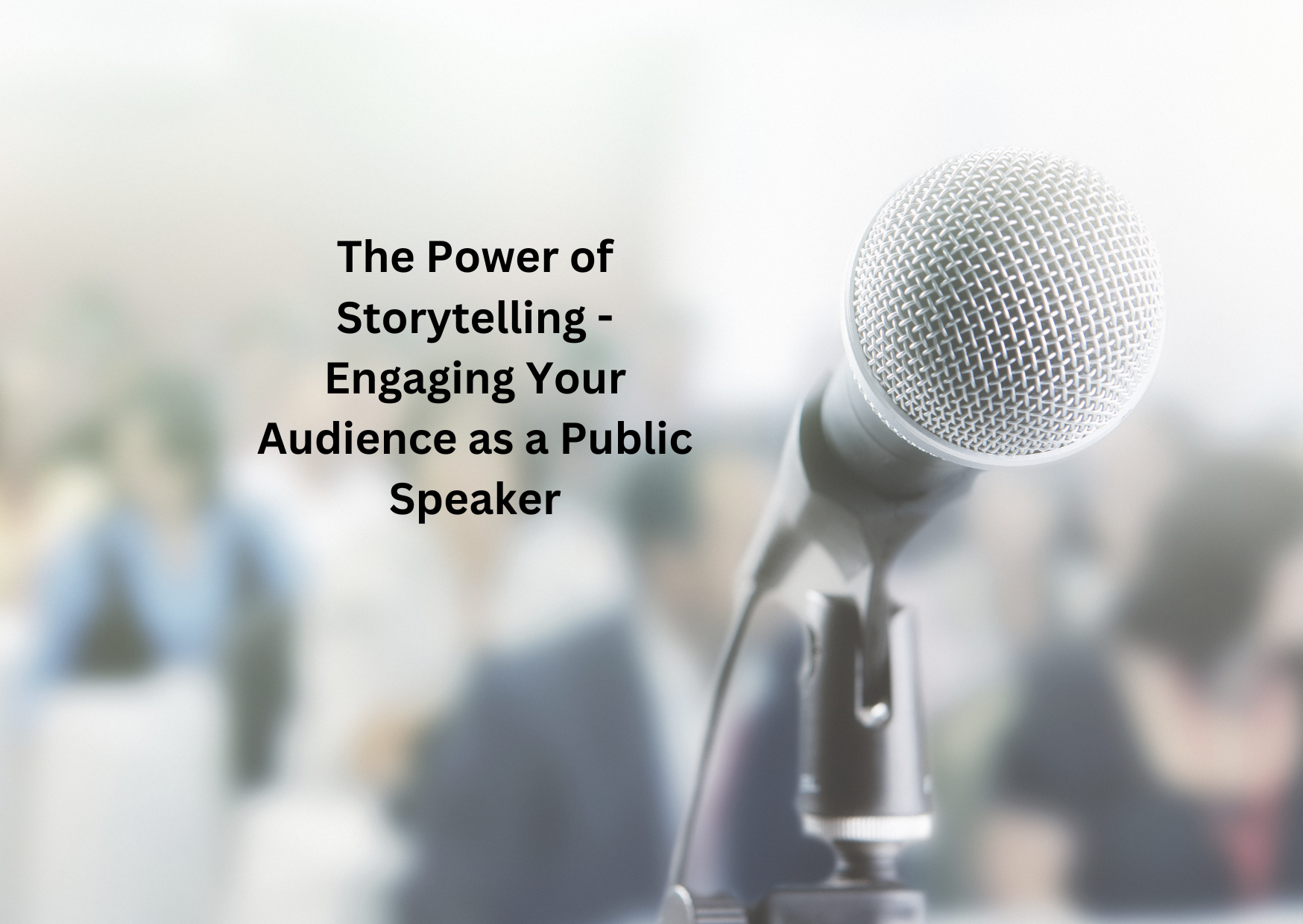Public speaking is an art form that extends far beyond just conveying information. It’s about connecting with your audience on a deeper level, inspiring them, and ultimately, influencing their thoughts and actions. One of the most potent tools in a speaker’s arsenal is storytelling. Stories have a unique ability to captivate, resonate, and evoke emotions in listeners. In this blog, we’ll explore the power of storytelling and how you can harness it to become a more engaging and impactful public speaker.
The Psychology of Storytelling:
At its core, storytelling taps into the fundamental way humans process information. Our brains are wired to respond to narratives, making them more memorable and engaging than raw data or facts alone. When you tell a story, you’re not just relaying information – you’re creating an experience for your audience. This experience stimulates multiple areas of the brain, including those responsible for emotion, empathy, and memory, resulting in a more profound impact.
Crafting Compelling Stories:
To effectively engage your audience, you need to craft stories that are relevant, relatable, and compelling. Start by identifying the central message or theme you want to convey. Then, choose characters, settings, and plot points that support that message. Personal anecdotes can be particularly powerful, as they allow you to inject authenticity and emotion into your storytelling. Don’t be afraid to be vulnerable – sharing your own struggles and triumphs can help forge a genuine connection with your audience.
Structuring Your Narrative:
A well-structured narrative follows a classic storytelling arc, with a beginning, middle, and end. Start by setting the scene and introducing your characters. Then, build tension and conflict as you navigate through the challenges they face. Finally, resolve the conflict and leave your audience with a clear takeaway or lesson. Along the way, use descriptive language, vivid imagery, and sensory details to bring your story to life.
Engaging Your Audience:
Engagement is a two-way street – it’s not enough to simply tell a story; you need to actively involve your audience in the experience. Encourage participation through open-ended questions, interactive exercises, or moments of reflection. Pay attention to nonverbal cues such as body language and facial expressions, and adjust your delivery accordingly. Remember, the goal is to create a dialogue, not a monologue.
Practice Makes Perfect:
Like any skill, storytelling requires practice to master. Rehearse your stories until they flow naturally, but don’t be afraid to improvise or adapt based on the energy of the room. Solicit feedback from trusted peers or mentors, and be willing to iterate and refine your stories over time. With each presentation, you’ll become more confident and polished as a storyteller.
Storytelling is a potent tool for public speakers, allowing them to connect with their audience on a deeper level and drive home key messages in a memorable and impactful way. By crafting compelling narratives, structuring your stories effectively, and actively engaging your audience, you can elevate your public speaking skills to new heights. So, the next time you step onto the stage, remember the power of storytelling and watch as your audience becomes captivated by your words.
